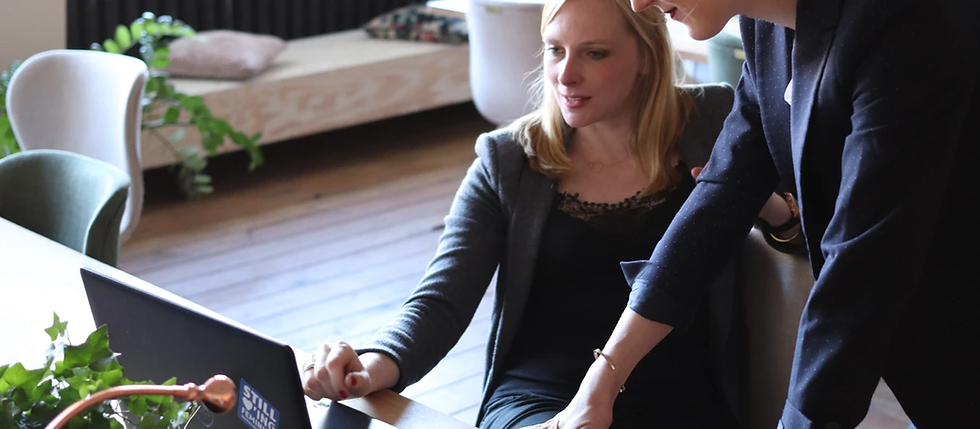Start Developing A/E Leaders Today
- Planifi

- Oct 14, 2019
- 3 min read
About the author: Don Archibeque is a Project Executive with Planifi, bringing more than 25 years of experience in construction and A/E (architecture and engineering) Project Management, as well as associated professional managerial services.
Developing a program for Architecture or Engineering (A/E) leadership development differs firm by firm and will be a challenging journey. It requires current leadership to both reflect and ask for feedback on their strengths/weaknesses, as well as to invest in process and training time for younger professionals.
Both are challenging tasks. Self-critiquing is not particularly enjoyable. Also, leadership training time for younger professionals is sometimes seen as an extravagance or increased overhead the firm simply cannot afford. However, your firm simply must make these investments.
There is an interesting paradox at many Architecture/Engineering (A/E) firms. By the nature of the work, A/E firms are composed of well-schooled women and men, people steeped in years of formal professional technical training and a well-established appreciation for ongoing technical learning as part of their careers.
Many of these same professionals, however, masters of technical skills, do not place nearly the same value on formal leadership training. This leadership training is what’s required to operate and grow successful businesses that allow for the practice of these technical skills.
Start Early
Management education and training must begin early in the professional career of your firm’s rising architects and engineers. Do not wait until they are already managers, directors, or principals! This is a common mistake (discussed in our last post) that leads to numerous challenges and often poor performance.
Investing in your firm’s rising leaders builds loyalty amongst your most valuable employees and proves your firm is forward-thinking. Leadership may be concerned younger engineers/architects will view formal training programs as “stifling their creativity.” However, the opposite is true. Leadership development and formalized processes enable design professionals to focus on the creative work rather than worrying about managing or developing their own process.
Use data to help new PMs identify project budget and staffing issues – Visual Planning
Develop Internal Programs
It may be tempting to outsource leadership training to a consultant or expert. After all, your leadership team is busy drumming up new business and managing client relationships.
External consultants can certainly help your firm get the ball rolling. However, executive leadership’s involvement in developing and sponsoring the program is a critical element to success. The busiest members of the leadership team often know the firm better than anyone else, knowing the intricacies of the business, the project work, and clients.
The organization’s strategic agenda must include leadership training on par with professional education and training with the time and financial investments to back that up. In order to develop any internal leadership training program, your firm should do the following:
Create your own teaching content that is relevant to our firm’s specific learning needs and type of work.
Consider your strategic plan for the business when developing teaching content and address real-life problems during training sessions. Your “students” may come up with solutions not previously considered.
Incorporate your firms cultural and strategic values into the curriculum. This provides an opportunity to deepen the understanding of your firm’s “why” and ensure those values continue with the firm for years to come.
Keep Going
Leadership training and development is an investment in your firm’s high-performing young professionals. It is an investment in your firm’s future and the continuance of the firm’s values. With that in mind, consider the following question – would you compromise your values if revenue started to decrease?
Oftentimes, firms will strike budget line items for formal leadership education the moment new client engagement slows down. This is equivalent to answering “yes” to the question above. If you divest from leadership education when business slows, the signal sent to up-and-comers is clear: management doesn’t really view leadership development, career development, or the firm’s future as an important value. Paints a pretty bleak picture, right?
Leadership development training is not an avoidable or discretionary expense. In fact, the immediate savings in cost will compound man times over when losing the firm’s most valuable young leaders and the relationships (future business) they’ve been developing.
So, how can your firm take the first steps to developing a leadership training program? We’d suggest starting with some data collection and answering questions in three key areas:
Interview your current managers and directors. Where do they feel like they could learn more?
Interview your up-and-coming young leaders. What are their common questions about managing people, projects, and budgets? What do they know about business development in A/E?
Interview the top-echelon of your leadership team, those that have a keen awareness of the firm’s capabilities and challenges. What does the firm need to overcome those challenges and how can you leverage leadership training to identify unidentified solutions?
Interested in how Planifi software can help your firm with leadership development – schedule a call today!



Comments